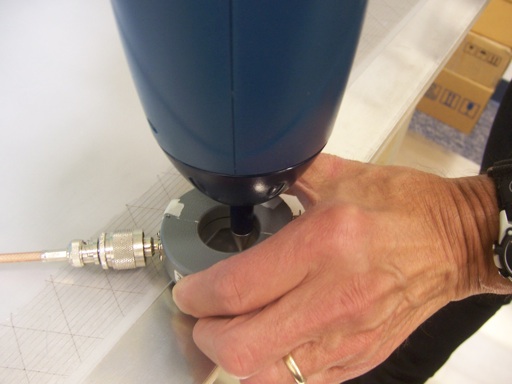
Figure 1. Current Waveform from ESD Simulator
(Vertical = 1/2 Amp/div, Horizontal = 50 ns/div)
Abstract: ESD Simulators, as
with all equipment, can exhibit degraded performance. A short video is
presented of sequential measurements of the contact discharge current
of an ESD simulator that shows unacceptable variation from one
discharge to the next. Possible causes are discussed for the example
presented and recommendations are made.
Discussion: Figure 1 shows one
frame of a short video taken of sequential contact discharges from an
ESD simulator. The measurement was made in a fashion similar to that
shown in Figure 2, although the ESD simulator used to generate the data
for this article was not the one shown in Figure 2, but a different one measured at a later time.
In Figure 2, the ESD simulator is discharged in the contact discharge mode into the Horizontal Coupling Plane, HCP, of an ESD test table through a Fischer Custom Communications F-65 current probe. To get maximum current, the simulator ground lead was connected to the HCP (as done in the ISO10605 ESD standard) rather than the ground reference plane on the floor to which the simulator ground lead is normally attached for IEC testing. The test was performed near the edge of the table for convenience, so the waveform will not be exactly a calibration waveform, but similar. The object was to look at variations from discharge to discharge.

Figure 2. Current Waveform Measurement of ESD Simulator
Figure 3 is identical to Figure 1 except if you click on Figure 3 a Flash video should play in your browser. You can see significant variation from discharge to discharge. The scope was sampling at 8 GSa/sec, so the variation was not due to sampling errors. That sampling rate gives 400 samples per horizontal division, more than adequate for this test.
Figure 3. Current Waveform from ESD Simulator
(Vertical = 1/2 Amp/div, Horizontal = 50 ns/div)
Click the picture or here to see the video.
In Figure 2, the ESD simulator is discharged in the contact discharge mode into the Horizontal Coupling Plane, HCP, of an ESD test table through a Fischer Custom Communications F-65 current probe. To get maximum current, the simulator ground lead was connected to the HCP (as done in the ISO10605 ESD standard) rather than the ground reference plane on the floor to which the simulator ground lead is normally attached for IEC testing. The test was performed near the edge of the table for convenience, so the waveform will not be exactly a calibration waveform, but similar. The object was to look at variations from discharge to discharge.

Figure 2. Current Waveform Measurement of ESD Simulator
Figure 3 is identical to Figure 1 except if you click on Figure 3 a Flash video should play in your browser. You can see significant variation from discharge to discharge. The scope was sampling at 8 GSa/sec, so the variation was not due to sampling errors. That sampling rate gives 400 samples per horizontal division, more than adequate for this test.
Figure 3. Current Waveform from ESD Simulator
(Vertical = 1/2 Amp/div, Horizontal = 50 ns/div)
Click the picture or here to see the video.
I suspect a defective relay in the
simulator may be the root cause of the variable discharge waveforms.
Also possible are simulator design problems such as using an inadequate
discharge relay. An unintended discharge within the simulator itself
cannot be ruled out at this point. The waveforms in the video
point out that ESD simulators should be checked frequently, especially
if the simulator is rented or you don't know the service history of the
simulator. Being calibrated once per year is not nearly enough for ESD
simulators. I personally check the simulator waveform at the start of
every test!
Summary:
Measuring ESD current from a simulator before ESD testing starts is critical in order to reveal problems with the
ESD simulator itself. This is especially important if you are using a
rented ESD simulator.
I would like to thank RMV Technology Group at NASA Ames Research Center for use of their facilities to generate the data for this Technical Tidbit.
Additional articles on this website related to this topic are:
- December 2010 Technical Tidbit, Comparing "IEC 61000-4-2 Compliant" ESD Simulators
- November 2010, Comparison of Current Waveforms from 150 Ohm and 330 Ohm Networks in an IEC 61000-4-2 Simulator
I would like to thank RMV Technology Group at NASA Ames Research Park for the use of their facilities to perform the tests for this article.
Need help with a design or additional training on technical subjects? Click on the image below to go to CircuitAdvisor.com, a new engineering resource for training, news, and fun.
Need help with a design or additional training on technical subjects? Click on the image below to go to CircuitAdvisor.com, a new engineering resource for training, news, and fun.
If you like the information in this article and others on this website,
much more information is available in my courses. Click here
to see a listing of upcoming courses on design, measurement, and
troubleshooting of chips, circuits, and systems. Click here to see upcoming seminars in Newport Beach, CA.
Click here for a description of my latest seminar titled (now also available online as a WebEx seminar):
EMC
Lab Techniques for Designers
(How to find EMC problems and have some confidence your system will pass EMC testing while it is still in your lab).
(How to find EMC problems and have some confidence your system will pass EMC testing while it is still in your lab).
Home

